The Fast and the Furious: Tokyo Drift
 for reckless and illegal behavior involving teens, violence, language and sexual content.
for reckless and illegal behavior involving teens, violence, language and sexual content.
Reviewed by: Robbye Fielden
CONTRIBUTOR
| Moral Rating: | Offensive |
| Moviemaking Quality: |
|
| Primary Audience: | Teens Adults |
| Genre: | Crime Action Thriller Drama |
| Length: | 1 hr. 44 min. |
| Year of Release: | 2006 |
| USA Release: |
June 16, 2006 (wide) |
| Featuring | Lucas Black, Lil' Bow Wow, Brian Tee, Sung Kang, Jason Tobin, Nathalie Kelly |
| Director |
Justin Lin |
| Producer | Amanda Cohen, Ryan Kavanaugh, Neal H. Moritz, Clayton Townsend |
| Distributor |
“Speed Needs No Translation.”
Sean Boswell (Lucas Black) stands out among the crowds in his Phoenix, Arizona high school. Not only does he not fit the mold, but he is further alienated from his peers by repeated relocations that are a direct result of his previous brushes with the law. Sean’s mother (Lynda Boyd), avoids convictions for Sean by moving her son to a new home after each arrest. Multiple speeding tickets and arrests for reckless driving have led to no less than three moves in recent memory. Unfortunately, Sean once again falls victim to the desire to race after being confronted by a jealous, rich, preppy football player whose thin, blonde girlfriend had conversed with Sean. When the race results in an arrest, the other culprits have well-positioned parents who can weasel out of a conviction for their children. Ms. Boswell, however, does not have such power and refuses to move again. Instead, she puts Sean on a plane to live with his father (Brian Goodman), who is stationed in the military in Tokyo, Japan. The rules of his dad’s home are to attend school, return directly home, and avoid all contact with cars.
Even in his new Tokyo school, it doesn’t take Sean long to find trouble. His new friend, Twinkie (Bow Wow), is quick to introduce Sean to the underground world of drift racing. These high speed, intense races through hairpin turns are accomplished by a driving technique that’s new to Sean. Drifting occurs when the rear tires of a car have a greater slide angle than the front tires. The rear of the car slides (drifts) faster than the front of the car around the turn so that the speed of the car can be preserved. The result allows street racers to conduct extreme races through parking garages and winding mountain roads and creates an alluring scene for one who is already addicted to the thrill of racing.
At his first drift gathering, Sean continues to be a magnet for trouble as his casual conversation with a classmate, Neela (newcomer Nathalie Kelley), results in yet another confrontation and race with her man. Unbeknownst to Sean, he’s pitted himself in a borrowed car against D.K., or the “Drift King” (Brian Tee). D.K. happens to be the nephew of Kamata, who is the top man of Yakura, Japan’s equivalent of the mafia. After Sean’s first unsuccessful attempt at drifting, he finds himself indebted to D.K.’s partner in crime, Han (Sung Kung), for the car he smashed. Now firmly entrenched in the drift racing and crime scene of Tokyo, Sean must learn to survive in his new world.
A viewer of the first two installments of “The Fast and the Furious” series would already be well aware that the main activity in the movie is illegal street racing. It should also present no surprise to the potential audience of this film that this underground world of street racing is wrought with scantily clad women and a general disregard for the law. “TFATF: Tokyo Drift” does not stray from these well-established portrayals of the street racing subculture. The laws that are broken in this film are too numerous to count, the skirts to short to adequately cover, and the shirts hardly large enough to fit a child. Other than Sean’s original brush with law enforcement in the opening scenes, the police are not a factor in this movie. It would seem that the world of drift racing exists apart from the reality of the law. In fact, Han informs Sean that as long as a car can do over 180 kph (about 112 mph), the police in Tokyo do not even try to follow in their standard police cars.
The sexuality in this movie is primarily seen in passing. One gal uses her undergarment as a flag to begin a race, another reveals her underwear when a gust of wind catches her skirt, and few women are seen in adequate clothing outside of school uniforms. However, there are no sex scenes or blatant nudity in the film. There is one oddly placed lesbian kiss. The language is surprisingly mild with one use of the F-word and the rest numbering in the range that can be counted on two hands.
Violence is quite obviously woven into the fabric of a life of crime. There are at least two scenes where a fist fight is used to convey a point. Additionally, guns are used to threaten individuals in one scene and are fired in anger in another intense sequence. The option to handle disagreements in a peaceful manner is rarely employed. As in the first two movies, the numerous crash scenes are vivid and powerful. As always, some characters walk away from seemingly deadly impacts and seem to have little physical penalty after some tough hits.
One concern about “Tokyo Drift” that was not present in the first two TFATF movies is that some of the characters are currently attending high school. Sean, Twinkie, and Neela, among several others, are all portrayed as average high school students who are well established in illegal activity while still underage. Further, since Sean is shipped overseas instead of facing the potential of being tried as an adult, some less mature viewers could fall for the fallacy that crimes committed while underage do not follow the committer into adulthood.
Though integral to the plot, it was also disappointing that Sean’s mother seemed to shirk all responsibility for Sean and his behavior when she sent him to live with his father. After her appearance at the police station, Ms. Boswell had no further contact with her son or his father. The implication could be that it is possible to reach the limits of a mother’s love for her son. Fortunately, we know that there is no limit to our Heavenly Father’s love for us and we cannot mess up too many times. God can forgive our sins and continue to love us regardless of what we’ve done and how many times we’ve messed up.
Given the expectation that this movie is rooted in a lawless and sexy underground scene, there were a surprising number of redeeming factors that emerged. One would expect that Yukura, the Japanese crime machine, would be rift with dishonesty and backstabbing, even among business partners. Han, to whom Sean finds himself indebted, reveals that he desires trust and character in those closest to him. He believes that, “who you choose to be around you lets you know what you’re made of.” Though he lives life in a web of crime, Han brings Sean into a make-shift family that cares for, teaches, and protects one another. There is a running theme of what it means to be a “gaijin,” or outsider. Though Sean is obviously an outsider in an Asian culture, Neela tells him that, “outsider can mean many things.” Sean is no longer an outsider after he’s taken in by Han and his following. Sean, like all people was looking for a place to belong. The Bible teaches us that Christians will be like outsiders at times (John 15:18ff), but we can trust that God sets the lonely in families (Psalm 68:6).
Another theme that emerges through the plot of the film is responsibility and facing the consequences of our actions. Without delving too deeply into revealing material, the “good guys” of the film make a few surprising comments such as, “I apologize
” and “I’m responsible for my mess.” The Bible teaches us that God forgives us for the sins that we commit if we ask Him to and believe that Jesus Christ died for our sins. We are never promised, however, that we will not face the consequences of that sin here on Earth or that we can avoid dealing with the mess that we create on our own. Even living as forgiven individuals in the eyes of God does not excuse us from apologizing for our mistakes and attempting to set things right again.
“The Fast and the Furious: Tokyo Drift” is intended to be an action flick about illegal street and drift racing. Thus, violence, sexuality and immoral activity are to be expected. If those particular topics are existing stumbling blocks in your life, then this movie is not for you. This reviewer found the action exciting and the plot acceptable. It is worth seeing on the big screen with excellent surround sound. If you do choose to see the movie, watch for some of the redeeming themes mentioned above. These topics could make for some interesting conversations with your movie-going-buddies. Just remember, drifting on the drive home is neither recommended nor safe—save your tires.
Violence: Heavy / Profanity: Moderate / Sex/Nudity: Moderate


Average / 3
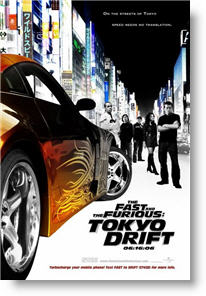
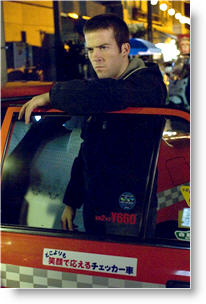
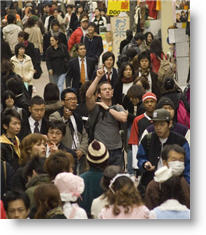
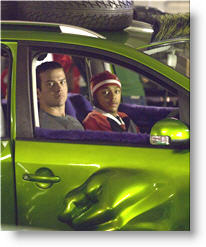

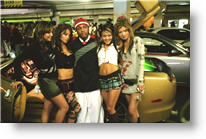
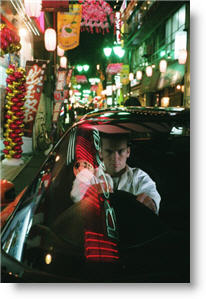
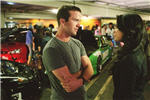

My Ratings: Average / 4